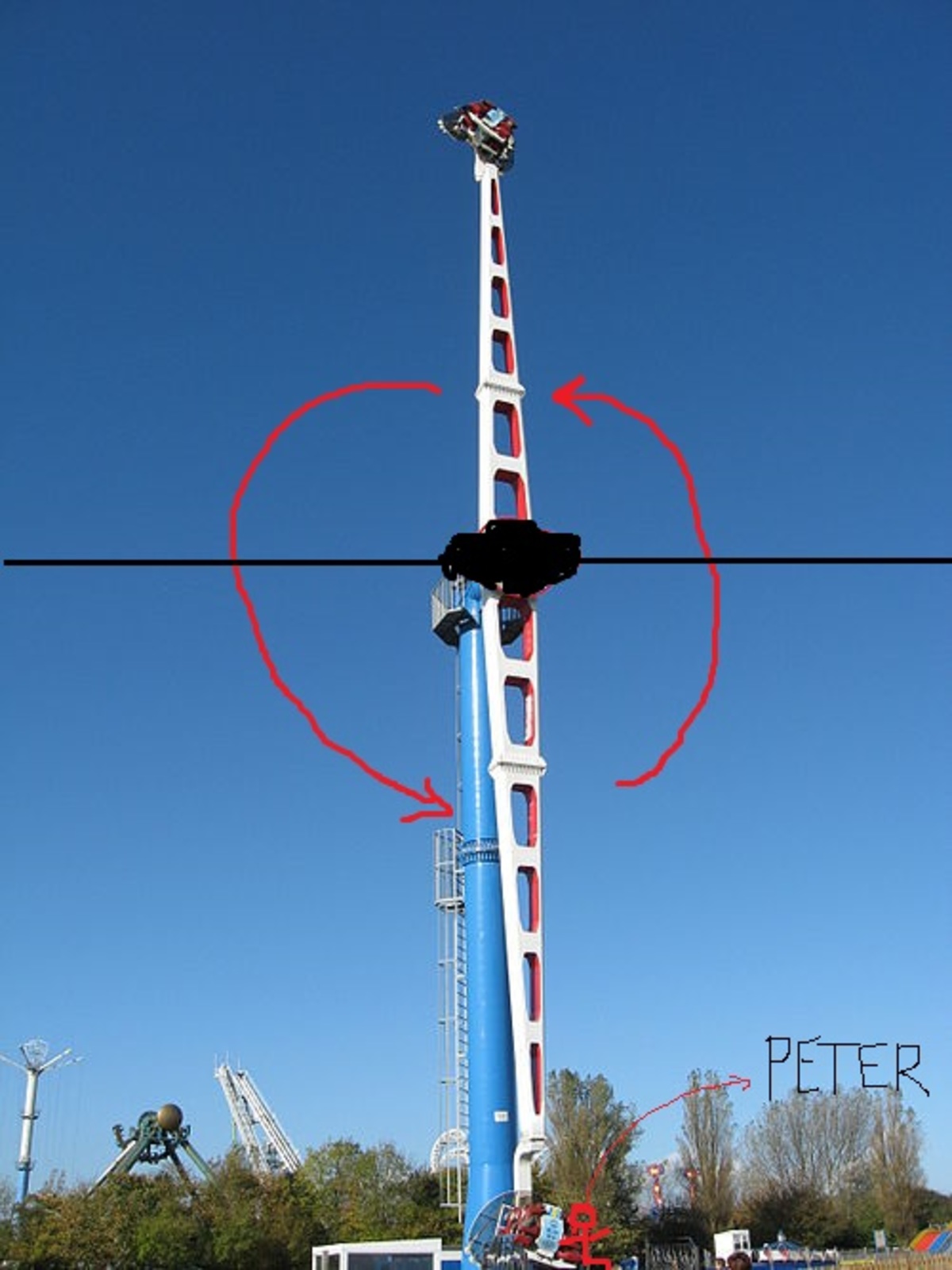Physics At The Amusement Park
Mathew and his friend Peter are at the Physics Amusement Park.
Peter just had an idea. He wants to enter the Booster ride (see picture) holding a ball, and then let go of the ball when the “arms” of the Booster are horizontal (position of the arms indicated by the black line). He expects that after a complete rotation, he will be able to catch the ball again.

Mathew is a bit more cautious. He believes that this can only happen if the Booster has a particular period (T) of rotation. Help Mathew calculate T (in seconds), for Peter to be able to catch the ball after a complete rotation.
Assumptions and Details:
-
Neglect air resistance.
-
-
Peter doesn’t push the ball away from him when letting go
-
Each arm has a length of 20 meters.
-
The booster revolves with constant angular frequency .
The answer is 5.06.
This section requires Javascript.
You are seeing this because something didn't load right. We suggest you, (a) try
refreshing the page, (b) enabling javascript if it is disabled on your browser and,
finally, (c)
loading the
non-javascript version of this page
. We're sorry about the hassle.
When the ball leaves Peter's hands at t = 0 , it will have a speed u , travelling vertically upwards. The ball's velocity is given by u ′ = u − g t and at the instance Peter catches the ball, it will be travelling downwards with velocity u ′ = − u . Therefore we have a flight time t = 2 u / g , which has to be equal to the period T of the Booster. T = 2 u / g = 2 ( ω R ) / g = 4 π R / ( T g ) So T = s q r t ( 4 π R / g )